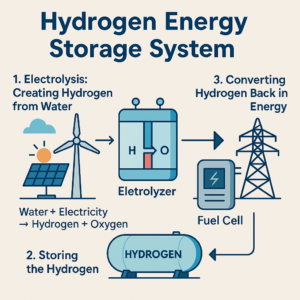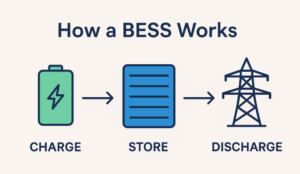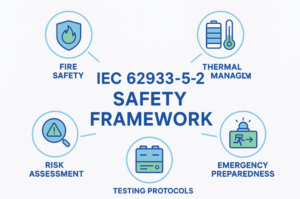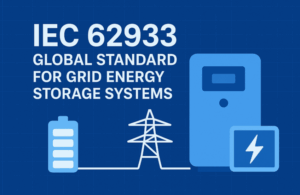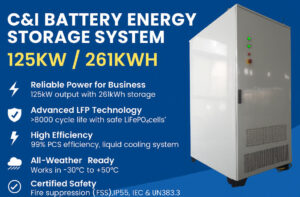PERC vs TOPCon vs HJT – Which Solar Cell Technology Reigns Supreme in 2025?

PERC vs TOPCon vs HJT: The solar industry has evolved rapidly in the last decade. What started with basic silicon wafers has transformed into advanced cell architectures like PERC, TOPCon, and HJT – each claiming higher efficiency and better performance. If you’re planning to install solar panels or are in the business of renewable energy, understanding these technologies is critical.
Let’s dive deep into PERC vs TOPCon vs HJT and find out which one suits your energy goals and budget in 2025.
☀️ What is PERC?
PERC stands for Passivated Emitter and Rear Cell. It’s an upgrade over the traditional monocrystalline and polycrystalline silicon solar cells.
🔍 Key Features of PERC:
- Rear-side passivation layer reduces electron recombination.
- Improves light capture by reflecting unused light back into the cell.
- Compatible with existing production lines – making it cost-effective.
⚙️ Typical Specs (2025):
- Efficiency: 20%–22%
- Temperature Coefficient: -0.35%/°C
- Degradation Rate: ~0.5% per year
- Cost: Lowest among the three technologies
🌞 What is TOPCon?
🔍 Key Features of TOPCon:
- Uses a tunnel oxide layer and poly-silicon layer for better passivation.
- Reduced carrier recombination and better open-circuit voltage.
- Can be produced using existing PERC lines with upgrades.
⚙️ Typical Specs (2025):
- Efficiency: 22%–23.5%
- Temperature Coefficient: -0.30%/°C
- Degradation Rate: ~0.4% per year
- Cost: Slightly higher than PERC but falling rapidly
⚡ What is HJT?
HJT stands for Heterojunction Technology. It combines the benefits of crystalline silicon and thin-film technology to produce ultra-efficient solar cells.
🔍 Key Features of HJT:
- Has amorphous silicon layers on both sides of the crystalline silicon wafer.
- Exhibits lowest degradation and highest bifaciality.
- Requires completely new production lines and clean room conditions.
⚙️ Typical Specs (2025):
- Efficiency: 23%–24.5%
- Temperature Coefficient: -0.25%/°C (best in class)
- Degradation Rate: ~0.3% per year
- Cost: Highest currently, but expected to drop as volume scales
🧪 Comparison Table: PERC vs TOPCon vs HJT
| Feature | PERC | TOPCon | HJT |
|---|---|---|---|
| Efficiency (%) | 20–22% | 22–23.5% | 23–24.5% |
| Temp. Coefficient (°C) | -0.35% | -0.30% | -0.25% |
| Annual Degradation Rate | ~0.5% | ~0.4% | ~0.3% |
| Cost (per Wp) | Low | Medium | High |
| Bifacial Factor (%) | 70–75% | 80–85% | 90–95% |
| Compatibility with PERC | Fully Compatible | Partially | Not Compatible |
| Future Potential | Moderate | High | Very High |
🔋 Energy Yield & Bifacial Advantage
Both TOPCon and HJT support bifacial designs – meaning they generate energy from both the front and rear sides. On average, bifacial gain adds 10%–20% more energy, depending on ground reflectivity and installation type.
PERC panels are also available in bifacial variants, but their bifacial gain is comparatively lower.
🌡️ Temperature Performance
HJT solar panels lead in temperature performance with the lowest coefficient. This makes them ideal for hot climates, desert regions, and rooftops with high ambient temperatures.
💰 Cost vs Benefit
- PERC is cost-effective, making it great for budget-sensitive residential projects.
- TOPCon offers better efficiency for a slightly higher price, ideal for commercial and industrial use.
- HJT is expensive now, but offers premium performance – especially where land space is limited and high energy output per m² is desired.
♻️ Manufacturing & Sustainability
HJT’s manufacturing process is low-temperature and non-metallic, making it more eco-friendly and suitable for recycling. TOPCon and PERC still use high-temperature diffusion and metallization processes, which consume more energy during production.
🔮 Future Outlook: What’s Coming Next?
| Technology | Maturity Level (2025) | Upgrade Potential | Scalability |
|---|---|---|---|
| PERC | Mature | Limited | Very High |
| TOPCon | Rapidly growing | High | Very High |
| HJT | Emerging Premium | Very High | Moderate (currently) |
- TOPCon is fast becoming the next mainstream tech as manufacturers shift from PERC lines.
- HJT is gaining traction in premium applications, especially when combined with IBC (Interdigitated Back Contact) for ultra-high efficiency panels.
📝 Conclusion: Which One Should You Choose?
Choosing between PERC vs TOPCon vs HJT depends on your project goals:
- ✅ Go with PERC if you’re cost-sensitive and want reliable mainstream panels.
- ✅ Choose TOPCon if you want a balance between cost, performance, and future readiness.
- ✅ Invest in HJT if your focus is maximum performance, futureproofing, and high ROI per square meter.
As of 2025, TOPCon is emerging as the optimal choice for most commercial and utility-scale projects, while HJT is best for those who want the best technology available – regardless of cost.
🤔 Frequently Asked Questions (FAQs)
Q1: Is HJT better than TOPCon?
Yes, in terms of performance, HJT outperforms TOPCon. But it comes at a higher cost and needs advanced manufacturing infrastructure.
Q2: Will PERC become obsolete?
Eventually, yes. TOPCon and HJT are expected to dominate by 2027 due to their better efficiency and temperature performance.
Q3: Which panel should I buy for a home installation?
If you want affordability – go for PERC. If you’re looking for longevity and better ROI – choose TOPCon or HJT depending on your budget.
🔧 Expert Tip:
For large-scale solar projects, always compare LCOE (Levelized Cost of Electricity) rather than just upfront panel prices. Efficiency and degradation directly impact long-term returns.

